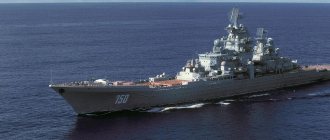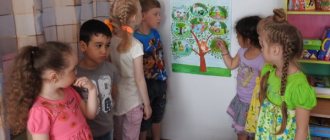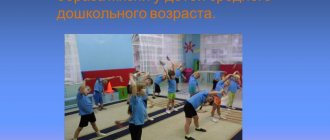Ground troops
This branch of the Russian Armed Forces is focused on conducting battles to ensure the security and defense of the state on land.
Motorized Rifle Troops (MSV)
This structure was formed in 1992. This is the most numerous type, consisting of motorized rifle units and subunits. MSVs are equipped with powerful weapons and effective command and control and reconnaissance equipment. They are designed to conduct combat independently or in combination with other types of aircraft.
Main goals:
- breaking through enemy defenses;
- defeat of the enemy;
- conquest of objects;
- pursuit of the enemy in case of retreat;
- holding positions;
- repelling enemy attacks;
- conducting oncoming battles.
Motorized infantry is characterized by high mobility and maneuverability.
Tank troops (TV)
The Russian Federation inherited strong tank forces from the Soviet Union. True, by 2009 the number of combat vehicles decreased from 23 to 2 thousand units.
TV is the main striking force of the army on land. They are equipped with all-terrain vehicles. Tanks of various types are fully armored. They are used in the main directions to deliver powerful and deep blows. Reliable protection, maneuverability and impressive firepower allow you to achieve your desired goals in a short time.
Tank forces
Missile Forces and Artillery (RF&A)
The missile defense forces were created in the early 60s as a result of the introduction of missile weapons. Such military units and formations serve as means of fire destruction and are capable of destroying enemy groups, air defense facilities, and hitting control posts and communication nodes.
The missile defense forces have missile systems and artillery systems. Constant attention is paid to the development of new ammunition widows.
Rocket Forces and Artillery
Air Defense Forces of the Ground Forces (Air Defense Forces)
Air defense troops repulse an enemy attack from the air. They carry out tasks to cover soldiers and rear facilities. This type of defense is organized in all types of combat. It includes reconnaissance and military air operations.
The Air Defense Army is equipped with equipment that has no foreign analogues. Its improvement is carried out by increasing maneuverability, endurance, high automation, and reducing the size of missile systems.
Air Defense Forces of the Ground Forces
Special troops
Special troops are military institutions that are designed to solve certain problems and support combat activities on land.
Corps of Engineers
Engineering troops are needed to accompany the military during an offensive, provide engineering reconnaissance and provide equipment to the battle area. They include various institutions and enterprises:
- military units;
- road engineering;
- pontoon connections;
- engineering and sapper.
In peacetime, special units of the engineering troops carry out measures to remove people from dangerous areas and eliminate the consequences of man-made and natural emergencies. To carry out combat missions, they use modern equipment, unique protective clothing of the latest generation, capable of protecting against mine explosions.
Corps of Engineers
RCB Defense Troops (RCBZ)
Chemical troops are capable of quickly carrying out tasks in extreme situations. They are designed to eliminate dangerous threats of a chemical and biological nature and the consequences of large-scale environmental disasters.
RKhBZ fighters mark the boundaries of areas of infection, conduct reconnaissance of the area and carry out procedures for disinfecting the territory. Chemical troops soldiers launch flamethrower mixtures for mass destruction of the enemy, organize activities for the transportation and release of waste radioactive substances.
Important! Thanks to the desperate feat of military chemists, it was possible to promptly eliminate the threat of a man-made disaster in connection with the accident at the Chernobyl nuclear power plant.
NBC protection troops
Signal Corps
A special branch of the military is engaged in the deployment of a communications system, the operation of automation equipment in control centers, and the provision of digital equipment. This includes:
- linear nodal parts;
- postal service;
- communications security service;
- communication technology divisions.
Signal equipment includes:
- equipment for voice-frequency telephony;
- photo and television equipment;
- message encryption devices;
- mobile stations.
Why was the Youth Army created?
- The leaders of the organization set as their goal to raise a generation capable of not only defending the Fatherland with arms in hand, but also defending the interests of Russia in peaceful spheres.
- Young Army members will actively study the geography and history of Russia, its peoples, heroes, commanders and outstanding scientists, and engage in basic military training.
- The Minister of Defense of the Russian Federation promised the Youth Army members that they would have the opportunity to fly airplanes, jump with a parachute and shoot from any weapon, with the exception of missiles.
- In their free time from school, teenagers will engage in volunteer and social activities, take part in cultural and sports events, historical Olympiads, reconstructions, Memory Watches, search expeditions, and will also be able to receive additional education.
Aerospace Forces
The Russian Aerospace Forces are organized to conduct combat in space and airspace. Their goal is the defense and security of the state. They were formed in 2015.
Air Force
The Air Force was created to protect important installations from attacks from the air or from space, ensuring the combat of the navy and ground units. The Air Force has certain functions:
- maintaining power in the sky;
- defeat of enemy ships in the sea and coastal areas;
- conducting aerial reconnaissance;
- protection of border air strips;
- notifying the headquarters of the Armed Forces about an enemy attack.
This type of armed forces includes several structures.
Air Force
Long-range aviation
Long-range aviation solves a lot of problems. These include:
- defeat of enemy ships;
- elimination of enemy industrial and energy facilities;
- ensuring combat readiness at the proper level.
Today, the main directions for the development of long-range aviation are the modernization of combat aircraft and the development of innovative aircraft systems.
Long-range aviation
Frontline aviation
Front-line aviation was created to conduct combat and solve problems in the operations of the Navy, Ground Forces and Air Force. This structure intercepts and destroys targets in the air, covers the army and rear facilities, conducts reconnaissance and searches for moving targets.
Front-line aviation is armed with aircraft equipped with various weapons and technological equipment.
Attention! Front-line aviation is also called “tactical”, “operational-tactical”.
Frontline aviation
Army aviation
The next component of the Air Force is designed for conducting aerial reconnaissance, supporting fighters on land, and landing troops. Army aviation is usually divided into 4 types:
- assault;
- intelligence;
- special purpose;
- transport.
All categories are armed with helicopters and airplanes.
Important! The country values the professionalism of army crews. Our compatriots were able to perform the Nesterov loop on the Black Shark.
Army aviation
Military transport aviation
The first day of summer is the date of birth of VTA. Over its long journey, military transport aviation has gone through a serious development path. Today this unit solves all types of operational and strategic problems.
The main task of the BTA is the transfer of units with military equipment. It has at its disposal domestic aircraft that cover up to 8 thousand kilometers by air.
Currently, this type of aviation is developing comprehensively. New aircraft and helicopter equipment are being supplied, and transport equipment is constantly being modernized.
Military transport aviation
Special aviation
Special aviation is designed to transfer fuel to aircraft, provide meteorological support, and rescue the wounded. Its employees refuel aircraft and conduct electronic warfare.
During military operations, special aviation uses heavy-duty aircraft and tankers capable of reaching speeds of up to 850 km per hour.
Interesting! In America, special aviation is usually called auxiliary.
Special aviation
Anti-aircraft missile forces (ZRV)
Air defense missile systems are necessary to protect important state and army facilities from enemy air strikes. The main firepower of the Air Force is equipped with highly accurate anti-aircraft missiles for various purposes.
The S-300, S-400, and Pantsir-S1 air defense systems are in service. The combat strength and staff may vary depending on the assigned combat mission and the characteristics of the protected objects.
Anti-aircraft missile forces
Radio technical troops (RTV)
RTV are the main source of information about enemy aircraft. They are designed for reconnaissance and control of aircraft flights.
Radio technicians provide information about the beginning of an attack in the air. RTVs are equipped with radar systems that detect any targets.
Radio technical troops
Air and Missile Defense Troops
Air defense and missile defense forces repel aggression from the air and protect against enemy attacks. The main goal in wartime is to defeat enemy missile warheads.
Russia's integrated air defense system is one of the most powerful and advanced in the world. A new generation of missiles is currently being developed.
Space Force
Space structures are assigned a wide range of tasks:
- observation of objects in space;
- launching devices;
- satellite control;
- identifying threats to the country from outer space.
What is the activity and number
- The main forms of activity of the children's and youth movement are military sports games, sports competitions in military applied sports, Memory Watches and hikes to places of military glory, as well as posts at the Eternal Flame, obelisks and memorials.
- On May 9, 2021, for the first time, Youth Army members took part in the parade dedicated to the 72nd anniversary of the Victory in the Great Patriotic War. Two parade squads of the movement, totaling 240 people, marched along Red Square in Moscow.
- The movement publishes printed publications: a weekly newspaper (circulation - 10 thousand copies) and a monthly magazine "Yunarmeets" (5 thousand copies).
- Currently, there are 85 regional headquarters of the movement (one in each subject of the Russian Federation) and 1.6 thousand local branches.
- As of February 21, 2021, almost 192.6 thousand people joined the Yunarmiya.
- The official website of the movement is https://yunarmy.ru
Navy
The Navy is a branch of the country's Armed Forces, formed to protect the interests of the state and conduct combat in the sea and ocean. The fleet is capable of hitting enemy ground targets, destroying ships at bases, protecting transportation by water and assisting fighters on land.
Submarine forces
Submarine forces include nuclear-powered strategic missile submarines and diesel-electric submarines. The main tasks include:
- eliminating enemy ships at sea;
- reconnaissance landing on the enemy coast;
- min setting;
- defeat of ground objects.
Submarine forces are divided into separate units reporting to commanders.
Submarine forces
Surface forces
Surface forces are designed to enter and deploy submarines into battle areas, transport troops and cover them. The main role is to lay minefields and protect their communications. Important properties:
- increased maneuverability;
- wide coverage of the territory;
- serious striking power;
- universal weapons.
Surface ships are equipped with powerful missile, torpedo, artillery weapons, hydroacoustic technologies and electronic devices. Almost all ships have a power unit in the form of a nuclear power plant, which provides a significant range at an impressive speed.
Surface forces
Naval aviation
Naval aviation is focused on the destruction of flying objects and cruise missiles, conducting aerial reconnaissance, covering ships from enemy attacks, and destroying enemy ships. It is based on helicopters and airplanes.
Soldiers are involved in laying mines, air transport, and rescuing people on the water. Naval aviation carries out assigned tasks together with other naval forces or separately.
Naval aviation
Coastal troops
BVs are designed to cover the fleet, citizens and objects on the coast from attacks by enemy surface ships, landings, and assistance on land. Coastal troops are equipped with combined arms equipment and have missile systems, various mobile and stationary installations for hitting targets.
BVs are divided into 2 categories: marines and rocket artillery. Each of them performs specific tasks.
Coastal troops
Marines
The Marine Corps has the following goals:
- capture of objects occupied by the enemy;
- assault on enemy fortifications;
- distracting the enemy's attention.
In terms of equipment and modifications, the units are similar to the motorized rifle troops. The main type of weapon is the Kalashnikov assault rifle.
Coastal Missile and Artillery Troops
Before the advent of the rocket gun, coastal artillery was considered the main force. In 1958, BRAV became a branch of the Navy.
Rocket and artillery forces are organized to destroy armed ships on the water, cover base facilities, and destroy enemy ports. Positive tactical properties include wide fire control maneuvers, the ability to fight in difficult weather conditions and deliver large strikes against surface targets in the coastal zone.
Navy special forces
Marine special forces units today are considered the most combat-ready in the Russian Armed Forces. The fighters have accomplished many outstanding operations related to the following tasks:
- support of landing operations;
- mining of enemy ships and their bases;
- search and destroy targets in the coastal zone.
In peacetime, Navy special forces fight terrorism and exchange experience with other law enforcement agencies of the country.
Attention! The correct name for Navy special forces soldiers is “reconnaissance diver”
Navy special forces
Who can become a youth member
- Citizens of the Russian Federation who have reached the age of 11 can join the Youth Army.
- Entire public organizations are also allowed to join: military-patriotic clubs, search teams, etc.
- In addition, participants in the movement can be foreign citizens, as well as stateless persons legally located in the Russian Federation.
- Membership in the organization is voluntary.
- Oath of the Youth Army member: “I swear to strive for victories in studies and sports, to lead a healthy lifestyle, to prepare myself for service and creation for the good of the Fatherland, to honor the memory of the heroes who fought for the freedom and independence of our Motherland, to be a patriot and a worthy citizen of Russia.”
Certain types of troops
Individual branches include missile and airborne structures.
Strategic Missile Forces (RVSN)
The Strategic Missile Forces are designed to deter enemy aggression and defeat them as part of nuclear forces. They can act independently with the help of nuclear missile strikes.
Rocket technology began to be actively researched back in the 1930s. The silo-based projectile was first used in 1960. After the collapse of the Soviet Union, the Strategic Missile Forces became part of the Russian Armed Forces; after another 5 years they were merged with space structures. Only in 2001 they were separated into a separate type of aircraft.
Strategic Missile Forces
Airborne troops (VDV)
Airborne paratroopers are part of the reserve of the Supreme High Command. Their task is to reach the enemy by air, destroy objects, and disrupt enemy communications.
In peacetime, the Airborne Forces maintain combat and mobilization activities at the proper level. Their structure includes the following divisions:
- airborne;
- assault;
- mountain.
Often, troops are used as quick reaction forces and delivered to the battlefield using helicopters and airplanes. Thus, each branch of the military has specific tasks. All units are unique and at the same time universal.
Who is leading the movement?
- The highest governing body of the movement is the All-Russian Youth Army Rally. It is convened at least once every five years.
- In the period between rallies, leadership is exercised by the main headquarters of the Youth Army, which is located in Moscow. Its composition is elected by the meeting for a period of five years from among the youth activists, the organizers of the movement or representatives of the founding organizations.
- The chief of the main staff is the Olympic bobsleigh champion, winter sports instructor of the Central Sports Club of the Army (CSKA), Lieutenant Dmitry Trunenkov (elected on May 28, 2021 at the founding meeting).
The main headquarters also includes:
- Arthur Chilingarov;
- Head of the Department of State Patriotic Education of the Main Directorate for Work with Personnel of the RF Armed Forces, Colonel Sergei Gusev;
- two-time Olympic champion, track and field athlete Major Elena Isinbaeva;
- general producer of the federal sports channel Match TV Tina Kandelaki;
- President of the Federation of Military Tactical Games actor Mikhail Galustyan and others.






